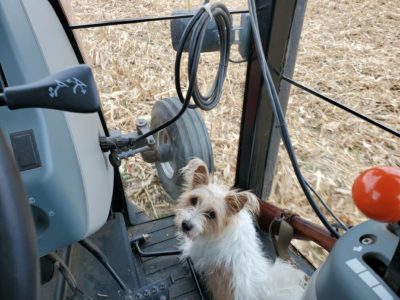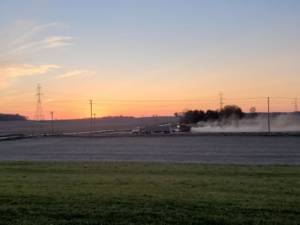 My “yield monitor” finally reported that soybean yields came in above average this year. But I’m a typical farmer – never quite happy. Even though soybean yields were above average, I thought they would be better based on what I saw throughout the season.
My “yield monitor” finally reported that soybean yields came in above average this year. But I’m a typical farmer – never quite happy. Even though soybean yields were above average, I thought they would be better based on what I saw throughout the season.
Soybean yields in my region of the U.S. Midwest depended on where you farm. Just 30 to 45 km, or 20 to 30 miles, south of me, yields were .7 to 1 metric ton per hectare, or 10 to 15 bushels per acre, higher than my yields. Just 25 to 30 km, or 15 to 20 miles, north of my farm, yields were 7 to 1 metric ton per hectare, or 10 to 15 bushels per acre, lower. So I really should be happy with what I got.
I was able to start harvesting corn about October 22, and moisture levels ranged between 18 and 22%. I haul my corn to two different nearby storage elevators, 6 and 11 km, or 4 and 7 miles, away from my main farm. By November 9, I finished harvesting all my corn except one field that was planted very late and still had very high moisture – 28%. I am letting that corn dry a bit longer in the field. I’ve never been in a race to be the first one done planting or harvesting in my area. I don’t care if I get done first or last, I focus on doing what is best for my fields long-term and what supports my profitability. So I don’t mind letting the corn dry in the field; after all, it is only mid-November, I have plenty of time.
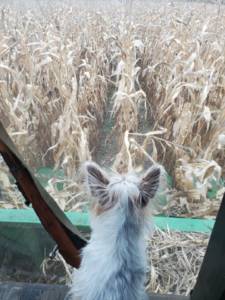 Overall, my corn yields were below average. The crop looked good and most fields yielded well, but heavy wildlife damage reduced my overall average quite a bit.
Overall, my corn yields were below average. The crop looked good and most fields yielded well, but heavy wildlife damage reduced my overall average quite a bit.
The fall weather has been perfect – what farmers dream of. For example, during the first week of November, in the middle of corn harvest, I had a couple significant breakdowns with both my combine and my grain truck. I ordered parts. While I was waiting for them to come in, I decided to add more to my plate and mow a hay field.
Cutting hay in November is rare and getting it dry is even more rare. This fall’s weather allowed it to dry quickly. On November 7, I baled my highest quality hay of 2020 on an open-station tractor in short sleeves. And I was perfectly comfortable. I baled most of the hay into high-quality square bales. I also made a few large round bales that I will feed to my cattle this winter.
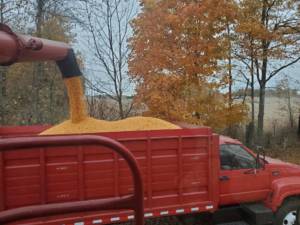
The fall weather also allowed me to plant cover crops and fertilize fields. I locked in low prices on fertilizer, so I have applied a fertilizer mix of potash, DAP, sulfur and boron to 75% of my fields. The fertilizer served as a carrier for my rye cover crop. All the fields that respond well to cover crops have been planted this fall. I won’t apply fertilizer to rolling land until next spring, just a few days prior to planting.
While my no-till system is best for the soil health in my fields, the plant matter that accumulates on top of the soil has now gotten so heavy that the row cleaners on my planter can’t always cut through it. That causes poor seed-to-soil contact and other problems during planting.
Because the weather continues to be so nice this fall, I decided to shred corn stalks to encourage decomposition and alleviate some of those planting issues. That’s not something I normally do, and the help wondered what we were doing. But I hope it will make it easier to plant soybeans in those fields next spring.
The cattle are doing well, and they are also enjoying the beautiful fall weather. I continue to deliver them to the small local meat processors where I was able to book appointments in November, December and April of 2021. I tried to schedule delivery appointments later in 2021, but all the local processors are booked solid through 2021, and they aren’t ready to make appointments for 2022 yet.
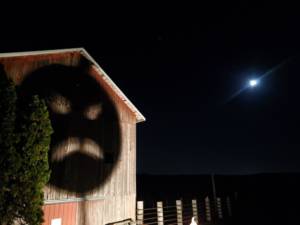 Halloween has always been one of my favorite holidays. I managed to get my annual pumpkin silhouette on my barn, as the picture shows.
Halloween has always been one of my favorite holidays. I managed to get my annual pumpkin silhouette on my barn, as the picture shows.
Fall 2020 has gone well on my farm, despite the breakdowns and less-than-expected yields. In fact, my “yield monitor” even went down for a while, literally falling asleep on the job… Makes me wonder just how accurate she is.





